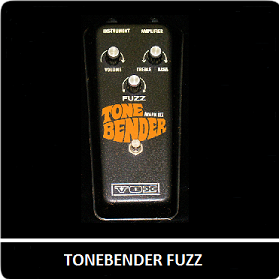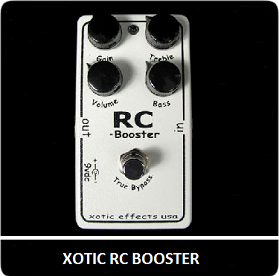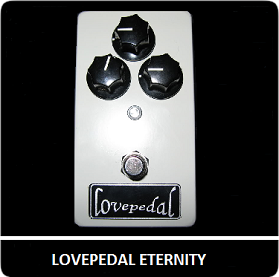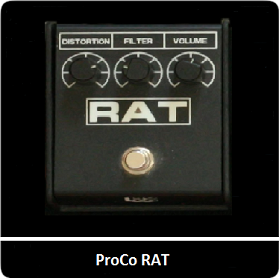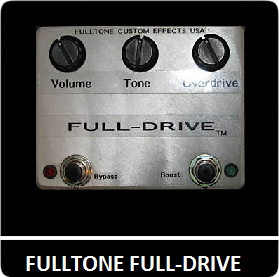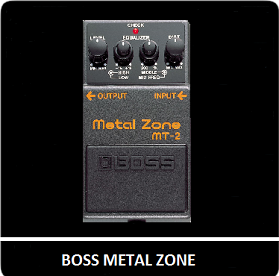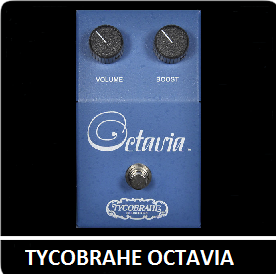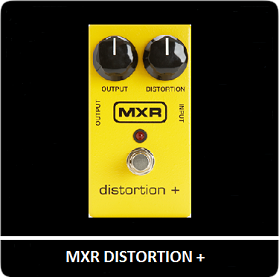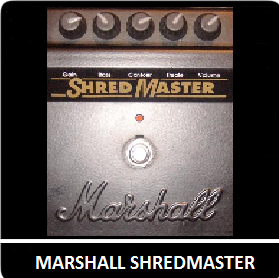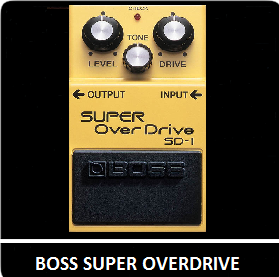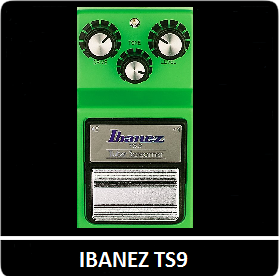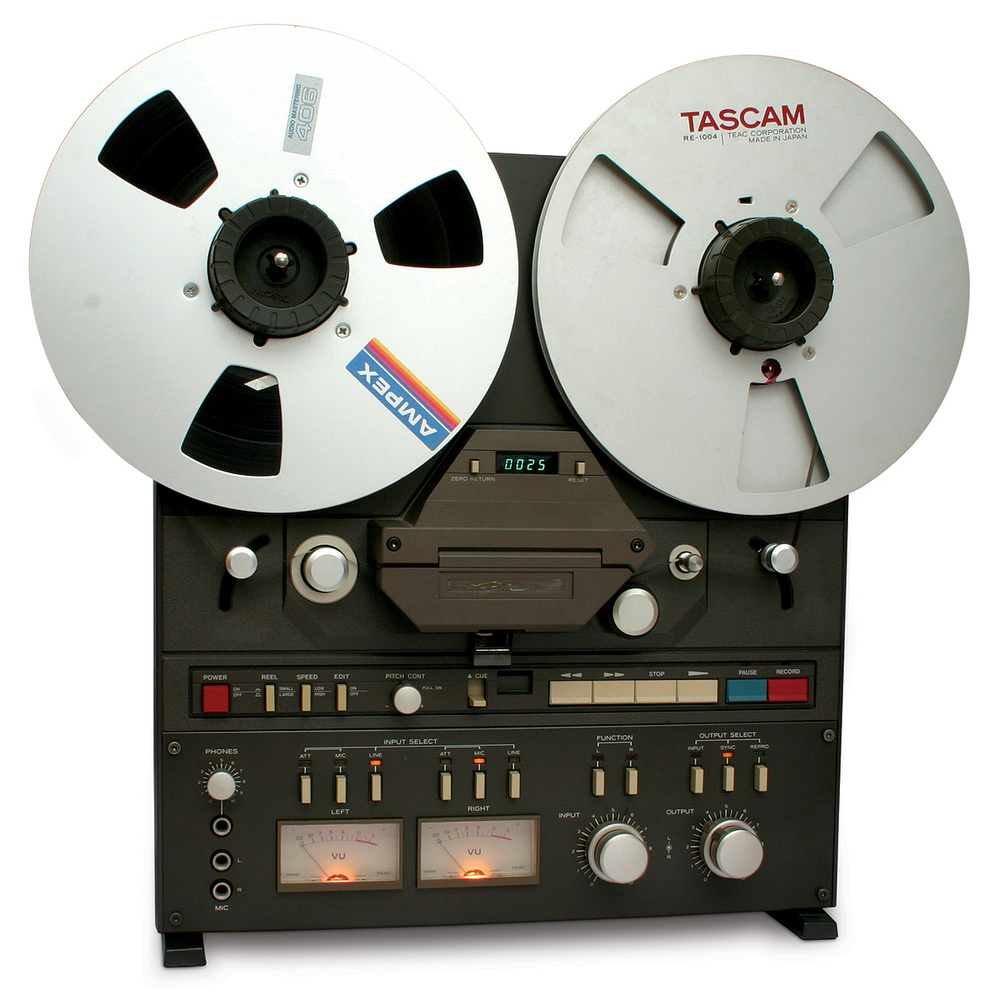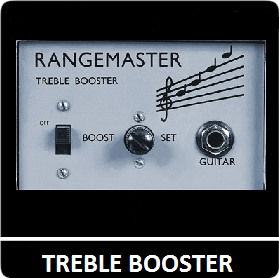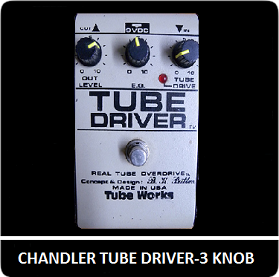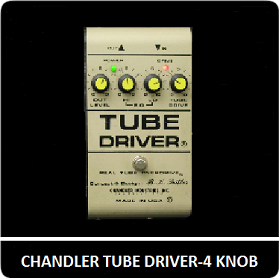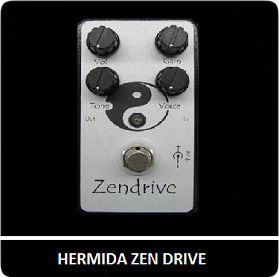This is the wiki for products made by Fractal Audio Systems, maintained by members of the community.
November 2025: the wiki is updated with AM4 data.
Drive block
Jump to navigation
Jump to search
Note: this page is a work in progress by forum member CBoothe01. The goal is to create a dedicated page to the drive blocks just as we have for the amp block.
Please note: Until the page is "final" expect there to be incomplete information for each drive block.
Contents
- 1 Manual
- 2 USER CONTRIBUTIONS
- 2.1 Drive: virtual knobs
- 2.2 Drive: Hard rock trick
- 2.3 Drive: Null clip type
- 2.4 Drive: Using an Amp Block as an Alternative to a Drive Block
- 2.5 Drive: Mix Parameter
- 2.6 Drive: Sample Rate Deduction
- 2.7 Drive: Transistor Types
- 2.8 Drive: Smilefan's Explanation of Clip Types
- 2.9 Drive: Simulating Other Drive Devices
- 3 DRIVE MODELS
- 3.1 BB PRE
- 3.2 BENDER FUZZ
- 3.3 BIT CRUSHER
- 3.4 BLUES OD
- 3.5 ESOTERIC ACB
- 3.6 ESOTERIC RCB
- 3.7 ETERNAL LOVE
- 3.8 FACE FUZZ
- 3.9 FAS LED-DRIVE
- 3.10 FAT RAT
- 3.11 FET BOOST
- 3.12 FULL OD
- 3.13 HARD FUZZ
- 3.14 M-ZONE DIST
- 3.15 MASTER FUZZ
- 3.16 MID BOOST
- 3.17 OCTAVE DIST
- 3.18 PI FUZZ
- 3.19 PLUS DIST
- 3.20 RAT DIST
- 3.21 SHRED DIST
- 3.22 SUPER OD
- 3.23 T808 MOD
- 3.24 T808 OD
- 3.25 TAPE DIST
- 3.26 TREBLE BOOST
- 3.27 TUBE DRV 3-KNOB
- 3.28 TUBE DRV 4-KNOB
- 3.29 ZEN MASTER
Manual
Drive Models Current as of FW 14
USER CONTRIBUTIONS
Drive: virtual knobs
- The position of the virtual knobs does not always correspond always to the real thing. In other words: use your ears, not your eyes.
Drive: Hard rock trick
- Put a Drive block such as the T808 before the Amp block, with minimal Gain and maximum Level. Turn down the Drive in the Amp block. This makes the low end tighter.
Drive: Null clip type
- This is a neutral boost, useful for things like bit reduction or sample rate reduction.
Drive: Using an Amp Block as an Alternative to a Drive Block
- Insert a 2nd Amp block before the main amp block, set SAG to zero ("p.a. off") to switch off power simulation, set Presence/HiCut to neutral ("5), and you made yourself yourself a preamp "pedal". Set the main Amp block to a fairly clean tone for best results. Works great with the Euro Blue/Red/Uber amp types, for example. Source
Drive: Mix Parameter
- Setting Mix to 0% in a Drive block is not equivalent to "true bypass" / 100% dry signal. Also, the Mix control operates prior to any tone control. This lets you mix some dry in with the distorted signal but still maintain overall tone control.
- Some people like turning down the effects’s Mix level to 80% or lower to increase transparancy and decrease buzziness.
Drive: Sample Rate Deduction
- Use sample rate reduction in Drive blocks to allow for intentional aliasing for creative effects.
Drive: Transistor Types
Drive: Smilefan's Explanation of Clip Types
- Former forum member Smilefan explains Clip Types:
- LV Tube – This will give the mildest, clearest drive
- Hard – This will give the hardest string attack
- Soft – This will give the softest, smoothest string attack
- GE Diode – This will give a bright, sweet attack
- FW Rect – Octave up overtones
- HV Tube – This will give a rich, full-range EQ drive
- Si Diode – Boxy, mid-rangey drive
- 4558/Diode – Highest drive level available, most gain.
Drive: Simulating Other Drive Devices
DRIVE MODELS
BB PRE
- Based on: Xotic BB PREAMP
- Xotic Effects Website
- "The BB Preamp offers a wide variety of sounds. It's capable of a 30dB+ clean boost with an adjustable ±15dB two band active EQ which adds a wide range of harmonic content to your ideal sound. The BB also utilizes a pre-gain stage which allows the Pedal to go from a very pristine clean to a very smooth,compressed, overdriven sound"
- Original controls: Gain, Volume, Treble, Bass
- Pro Guitar Shop Strat Demo
- Pro Guitar Shop Les Paul Demo
BENDER FUZZ
- Based on: classic Tone Bender circuit
- One of the first fuzz pedals to come out of England in the mid 1960s. There are numerous versions and circuits, and has been copied and cloned by many manufacturers and boutique companies
- Original controls: vary based on circuit and manufacturer
- Wikipedia Tone Bender Page
- Premier Guitar Article on the Tone Bender Circuit
- Sola Sound Demo
- Jimmy Page Tone Bender Demo
BIT CRUSHER
- Based on: bit crusher digital audio effect
- Wikipedia: "A Bitcrusher is a digital audio effect, which produces a distortion by the reduction of the resolution or bandwidth of digital audio data. The resulting quantization noise may produce a “warmer” sound impression, or a harsh one, depending on the amount of reduction. A number stored digitally has a resolution given as n bits, where there are 2^n possible values of the number. If one reduces the number of bits used to store the number, the number of possible values of the number is decreased, and thus the resolution decreases, producing quantization distortion. For example, a standard CD has a resolution of 16 bits, thus there are 216 possible values for any given part of the musical waveform. If this is reduced to approx. 8 bits, distortions can be noticed, reducing the quality. These distortions add to the original overtone in such a way that the wave shape becomes angular. This can produce a “warmer” sound impression than the original waveform, especially if the wave is rounded off in certain ways.[citation needed] Often this is used with techno or electronic music consciously, without regard to fidelity"
- Hexe Bit Crusher Demo
- Battle of the Bit Crushers
BLUES OD
- Based on: Marshall BLUESBREAKER
- Marshall website: "The Bluesbreaker II takes the philosophy of our original Bluesbreaker pedal one step further by adding two modes, Blues and Boost, effectively making it two pedals in one. Boost mode is designed with the vintage valve amp or ‘tone purist’ player in mind, for when you don’t want to alter the tone of your amp at all, but want to drive the front end harder to push the amp further into natural overdrive. The Boost mode features a clean boost controlled by the pedal’s volume control, which will not affect your original tone. It can also be used for boosting the signal which can sometimes be lost when using long leads (particularly with single coil pick-ups). Blues mode is reminiscent of the tonal and distortion characteristics of our non Master Volume amps, such as the classic Bluesbreaker combo from the 1960s. This mode produces a wonderful natural style overdrive for crunchy chord work and singing single notes for truly inspirational leads, all delivered with the warmth and tonality of those early Marshalls"
- Original controls: Gain, Tone, Volume. Mode Switch, Drive, Tone Volume on the BB-2 BLUESBREAKER II
- Marshall Web Page for the BB-2
- BB-2 Manual
- Tone Shack Demo of the Original
- Original Demo with Gibson SG
ESOTERIC ACB
- Based on: Xotic AC BOOSTER
- Xotic Effects Website
- "The Xotic AC Booster Overdrive Guitar Effects Pedal creates a warm and pleasant sound by using the finest quality parts available. The AC Booster is a natural sounding "overdrive" pedal. Not "heavy" distortion, but a sweet thick overdrive with an "open" non-compressed feel. It's capable of a 20dB+ boost with an adjustable ±15dB two band active EQ, which adds a wide range of harmonic content to your ideal sound. The super wide range gain control allows for enough gain for it to work as a distorion pedal when turned all the way up. Equipped with not only boost Gain but also Treble and Bass controls that allow you to adjust your sound anyway you like. The AC booster features true bypass for eliminating any signal interference when switched off."
- Original controls: Gain, Volume, Treble, Bass
- Pro Guitar Shop Strat Demo
- Pro Guitar Shop Les Paul Demo
ESOTERIC RCB
- Based on: Xotix RC BOOSTER
- Xotic Effects Website
- "The RC Booster offers a super transparent 20db+ clean boost with an adjustable ±15dB two band active EQ that adds a wide range of harmonic content to your ideal sound. As a clean boost, it can enhance other pedals, such as "overdrive and distortion pedals," or you can crank the gain for a "crunch" sound. But, the RC Booster is so extremley transparent that many players find they leave it on all the time. It also features true bypass for eliminating any signal interference when switched off"
- Original controls: Gain, Volume, Treble, Bass
- Pro Guitar Shop Demo
- XOTIC Guitars Demo
ETERNAL LOVE
- Based on: Lovepedal ETERNITY
- Lovepedal Website
- "The Lovepedal Eternity can be 3 pedals in one – Overdrive, Treble Booster and Clean booster – depending on where you set the dials. You can also blend these 3 factors. Darker tones brighter tones, etc. Unorthodox tone control. It’s a treble boost instead of a normal tone control. It is a very smooth type of OD. It can go from nothing at all to sounding like a very warm vintage overdriven tube amp or a clean flat booster or a treble booster even a tweed amp. With the treble boost all the way off, it is warmer than most tube amps. The Eternity Overdrive always stays true to what’s coming out of your guitar so you never turn into the pedal. No matter how hard you drive it. It also breaks up the harder you dig into the strings, which is priceless"
- Original controls: Level, Drive, Glass
- Pro Guitar Shop Demo
- Gearmandude Demo
FACE FUZZ
- Based on: Dallas Arbiter FUZZ FACE
- Wikipedia: "Arbiter Electronics Ltd. first issued the Fuzz Face in 1966. Later units bear the "Dallas Arbiter", "Dallas Music Industries Ltd.", "CBS/Arbiter Ltd." or "Dunlop Manufacturing Inc." name. The earliest units used germanium transistors. Silicon transistors were used in later editions of the pedal. Silicon transistors provided for a more stable operation, but have a different, harsher sound. The electronics are contained in a circular-shaped metal housing. Ivor Arbiter "got the idea for the round shape when he one day saw a microphone stand with a cast iron base".[1] The pedal uses two knobs, one for volume, and one for the amount of "fuzz" the pedal produces. The arrangement of controls and logo on the box suggests a smiling face. The circuit is based on the shunt-series-feedback amplifier topology - a standard in engineering text books. Sola Sound and Vox had been using the same circuit topology for some of their Tone Bender pedals earlier in 1966. Dallas Music Industries made a final run of Fuzz Faces in 1976 or 1977, shortly after they had moved to the United States. The company bought Crest Audio in the 1980s and although it was operating under that name when it reissued the Fuzz Face in the 1986, the units bore the Dallas-Arbiter name. They made about 2000 Fuzz Faces until 1990. In 1993 Dunlop Manufacturing took over production, making a variety of Fuzz Faces to this day. Several germanium and silicon models are available. In 2013 smaller versions with status LEDs and AC power jacks were introduced. In the late 1990s Arbiter reissued the pedal as well"
- Original controls: Volume, Fuzz
- Dunlop Web Page for the Fuzz Face Pedal built to Dallas Arbiter Specs
- Dunlop Fuzz Face Manual
- Gearmandude Strat Demo & Comparison with Dunlop FF and Dunlop Hendrix FF
- Dunlop Fuzz Face Shoot Out With Jeorge Tripps and James Santiago
FAS LED-DRIVE
- Based on: Custom FAS LED Drive
- ...
FAT RAT
- Based on: Modified PRO CO RAT
- Notes: see RAT (below)
- Popular Mods-Scroll Down:
- Resistor Mods: The Ruetz RAT mod which involves simply cutting the 47 Ω resistor to disengage half of the drive circuit. Gain is reduced somewhat and the bass is no longer attenuated. Additionally, the 560 Ω resistor controlling the lower half of the distortion filter can receive similar treatment. Either can translate to thicker (fuzzier) bass response at the expense of less distortion.[20]
- Toggle Switches: The Mightier Mouse mod involves a 3-way switch to select between RAT 2 (clipping via op-amp only), Turbo RAT (clipping via LEDs), and MOSFET clipping modes. It also shows an alternative to the Ruetz RAT mod using a potentiometer or trimpot to replace the resistor instead of simply cutting it.[21]
- Diode Removal: Removing one of the two silicon clipping diodes for a volume boost crunch tone.
- Chip Substitutions: The original RAT pedals featured the LM308 op-amp which is now quite expensive. Recent RAT pedals now feature the Texas Instruments OP07DP. Other op-amps that people try include the CA3130EZ (Mosfet Based) NE5535A, NE5534AP LM741 and TL071 FET-OP. Many install an IC socket to enable easy swapping of ICs, very much similar to what people do with the Ibanez Tube Screamer.
- Capacitor Mods: "softening" ceramic caps replaced with silver mica or metal film caps for better tonal fidelity. These include the 30 pF cap riding the IC chip and the single 100 pF cap.
- Robert Keeley does a popular mod involving replacement of the existing op-amp for an original LM308, a capacitor upgrade (using film and tantalum capacitors) to improve bass response and a 3 way mode switch. The first mode is the Classic RAT which is the original RAT circuit. The second mode is the Phat RAT which has an extra diode added to the original circuit in attempt to achieve a more tube-like sound. The final mode is the Mighty Mouse in which a diode is removed from the original circuit causing it to behave more like a boost pedal.
FET BOOST
- Based on:
- To see what FET boost pedals can accomplish, read the desciption of the Fulltone Fat-Boost
FULL OD
- Based on: Fulltone Fulldrive
- Original controls: Volume, Tone and Overdrive Knobs and a Boost Switch
- Fulltone Website
- There are 3 versions of the FullDrive, V1, V2 and the newest, V3.
HARD FUZZ
- Based on:
- ...
M-ZONE DIST
- Based on:
- ...
MASTER FUZZ
- Based on:
- ...
MID BOOST
- Custom FAS Mid Boost
- ...
OCTAVE DIST
- Based on:
- ...
PI FUZZ
- Based on:
- ...
PLUS DIST
- Based on:
- ...
RAT DIST
- Based on: Pro Co Rat
- Wikipedia Page: "The Pro Co "The RAT" is a distortion pedal with a very simple circuit, based around a single op-amp, originally the Motorola LM308 (later switched to Texas Instruments OP07DP). The distortion is produced using a variable gain circuit with diodes shorting the output to ground to produce hard clipping of the input waveform. This distortion stage is followed by a passive tone filter and volume control. This is the same scheme as the Boss DS-1 distortion pedal, although there are major differences between the two circuits. A major difference is the opamp used, the LM308, known for its poor slew rate; it accounts for the sonic difference between the two pedals. The most popular RAT pedal, the RAT2, features true-bypass switching"
- Original controls: Distortion, Filter, Volume
- Good Demo with Tele and Les Paul
- Comparison of Vintage vs Newer version
- iGuitar Demo
SHRED DIST
- Based on:
- ...
SUPER OD
- Based on:
- ...
T808 MOD
- Based on: modded version of the Tubescreamer. More bass, more gain range, more transparent
- ...
T808 OD
- Based on: Ibanez TS9
- Cliff: "The T808 drive is NOT based on the Ibanez TS-808 but rather the TS9 model. Manual is wrong." Source
TAPE DIST
- Based on: generic tape distortion
- Try the Tape Dist block AFTER the Amp block to add bite to the tone. Cliff: "The tape drive is meant to be used anywhere in the chain. I've been using it after the amp to fatten things up and it work really well for that. Be careful though, the drive block is mono so you can get phase issues if you put it after a stereo effect."
- Cliff: "It's just a generic tape distortion simulator. I used an old Ampex EQ curve basically."
TREBLE BOOST
- Based on: Dallas Rangemaster
- Wikipedia: "...widely used in the late 1960s and early 1970s. Hard to find today, the Rangemaster sound is still sought after, and many clones based on its extremely simple circuit have been made commercially and by hobbyists. Unlike most of today's clones, the original Rangemaster was not a pedal, but a box meant to be placed on top of the amplifier. The circuit makes use of a single OC71 or OC44 germanium transistor. One can hear the Rangemaster in many Queen songs, a good example being Procession from Queen's second album, Queen II.[citation needed] Tony Iommi is another Rangemaster user, and can be heard using one modified by a roadie on many Black Sabbath recordings. An alleged early user of the Rangemaster was Eric Clapton, who supposedly used one around the time of John Mayall's Blues Breakers with Eric Clapton album, in combination with a 1960 Gibson Les Paul Standard and a Marshall Bluesbreaker. This connection is often used to market modern clones of the circuit and contributed a lot to its popularity in recent years, even though there is no evidence that Clapton ever used one."
- Original Controls: Boost (on/off,) Set
- Premier Guitar Article
TUBE DRV 3-KNOB
- Based on: Butler Tube Driver (3 knobs)
- B.K. Butler talking about the Tube Driver: "There is NO Chandler Tube Driver… Never was a Chandler Tube Driver! They just marketed it for a while.” But I do understand the confusion caused when I allowed their name to be included on my product. My lesson was well learned… enough said." Source
- Cliff: "The model in the Axe-Fx is based on the 3-knob version. The 3-knob version sounds very different than the 4-knob version." Source
TUBE DRV 4-KNOB
- Based on: Butler Tube Driver (4 knobs)
- Notes: see TUBE DRV 3-KNOB
- Cliff: "The idea with the 4-knob version is to use the tone controls on the EQ page and leave the single Tone knob at noon. You can still use the Tone knob if you want but the model is only accurate with the knob at noon"
ZEN MASTER
- Based on: Hermida Zendrive
- ...

